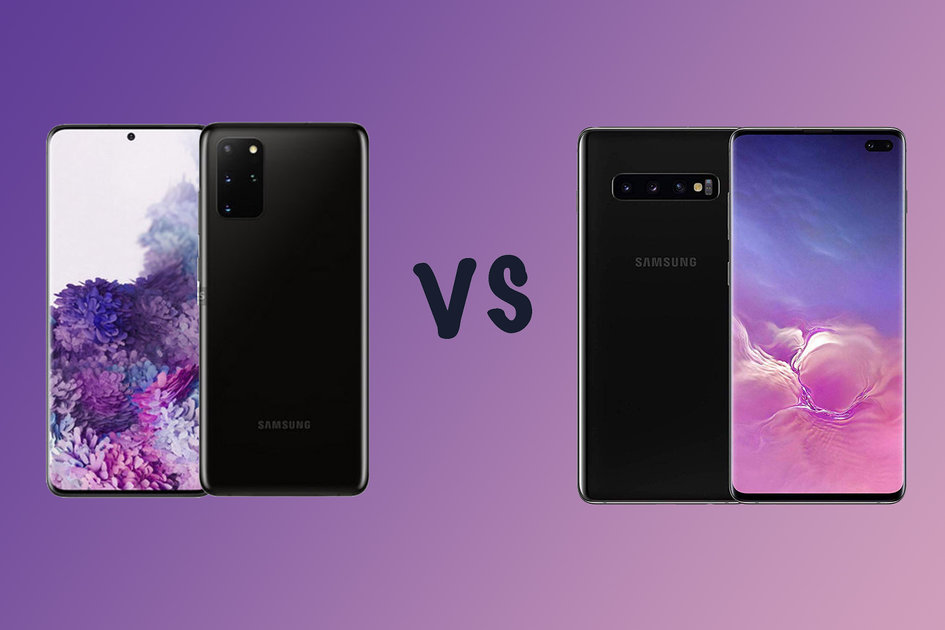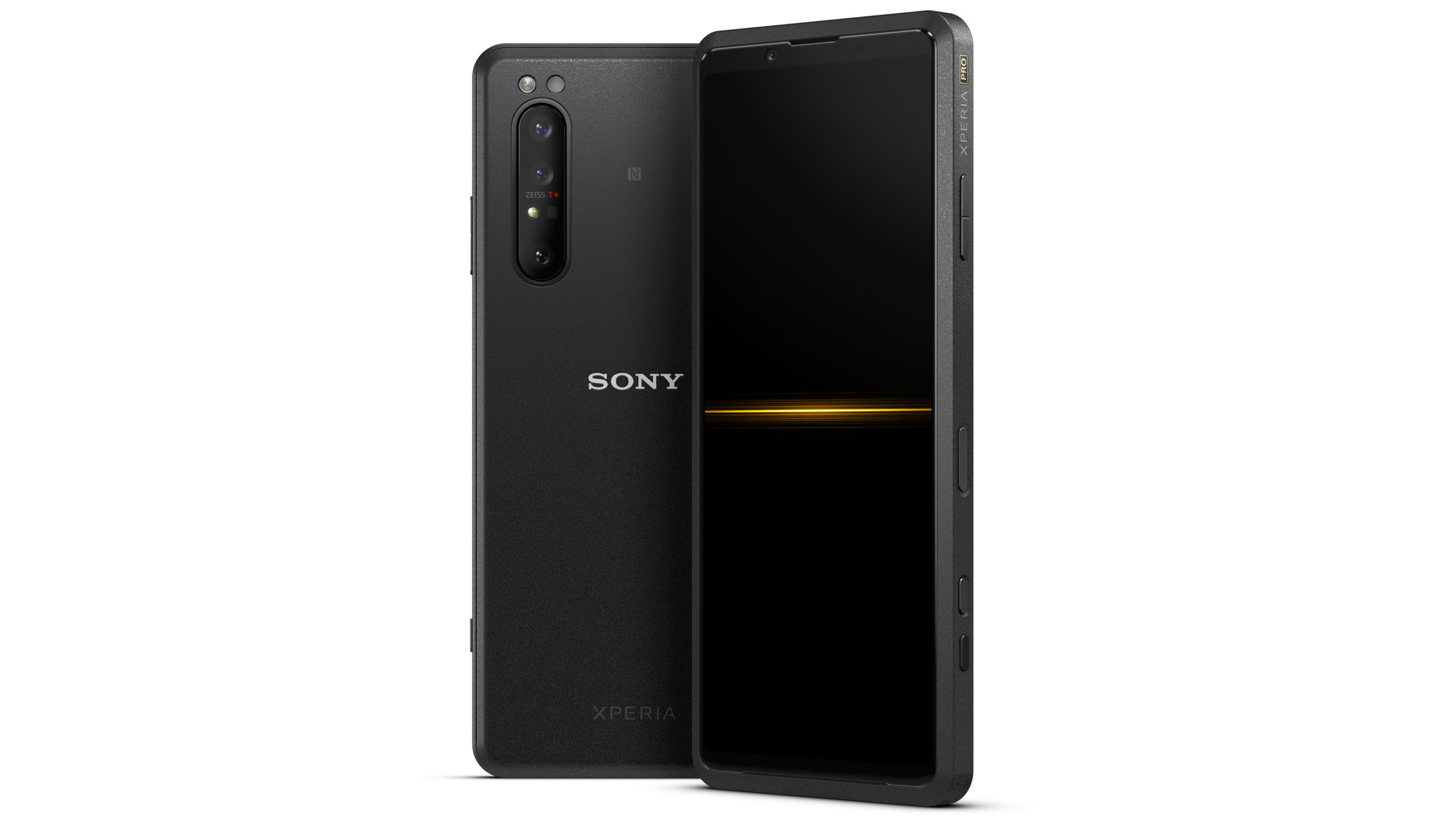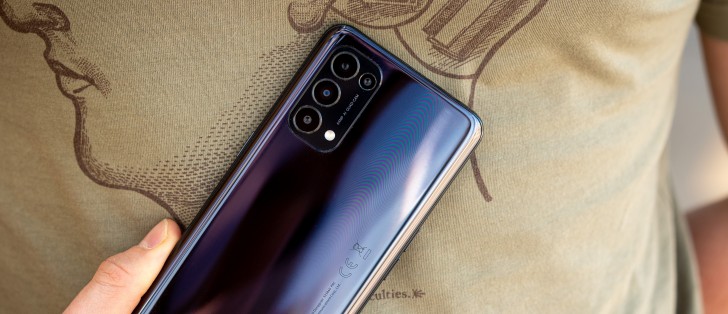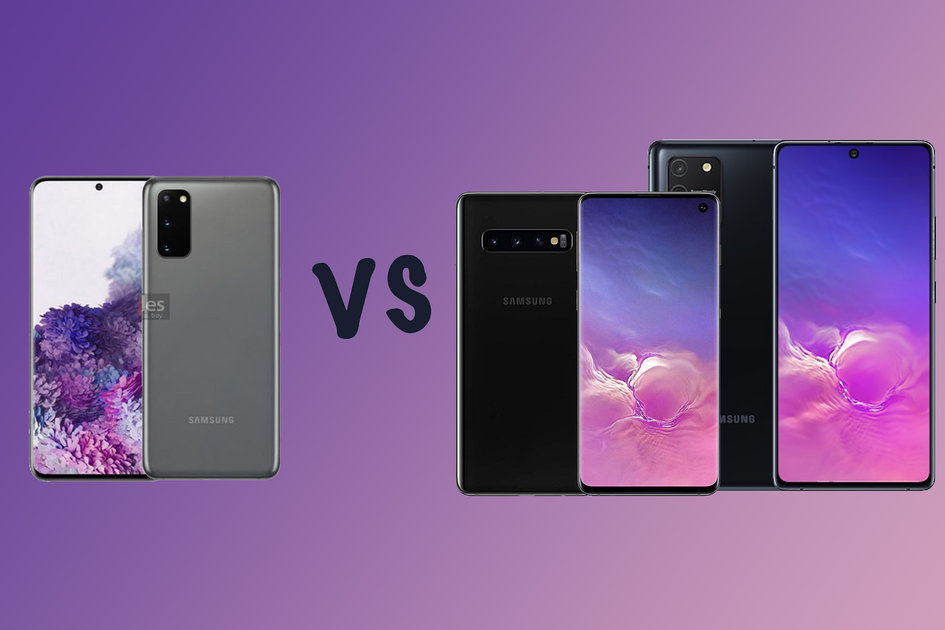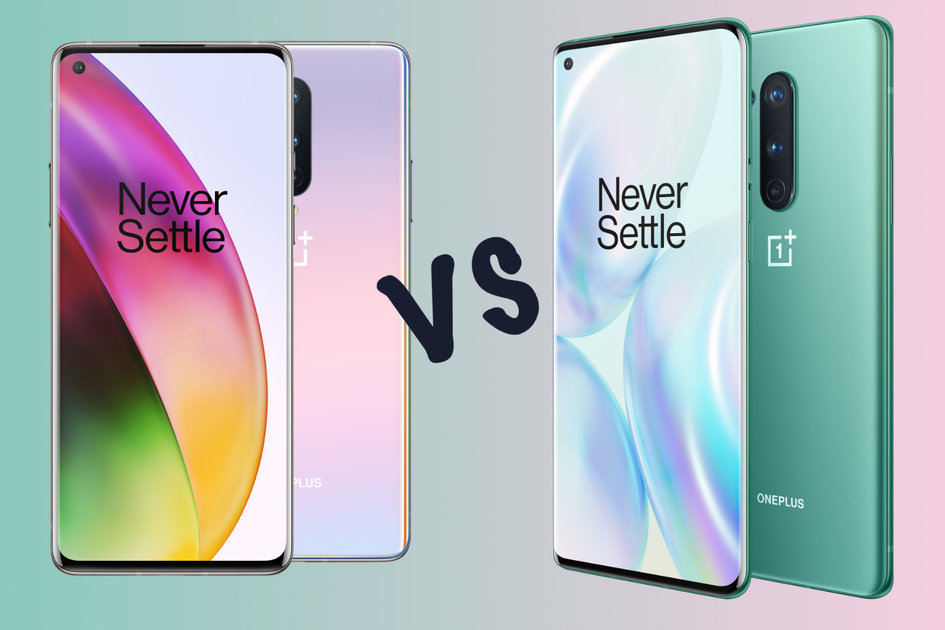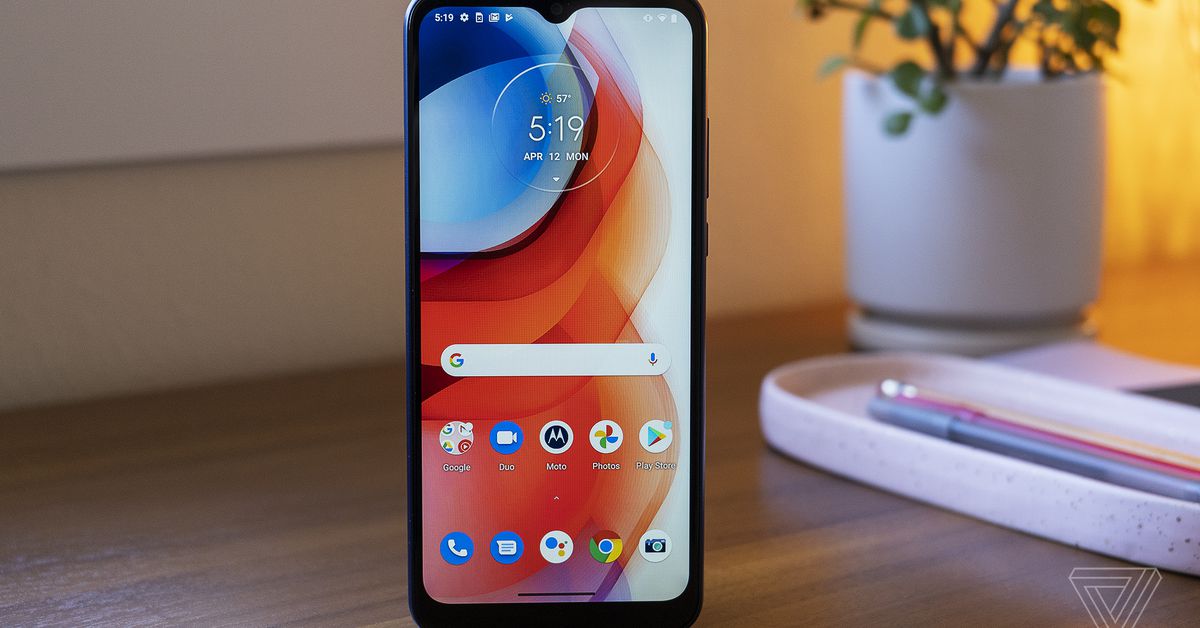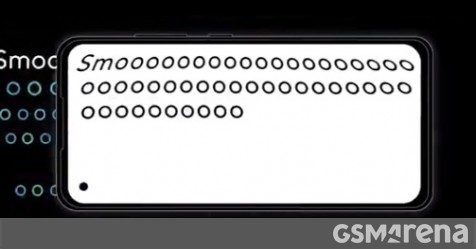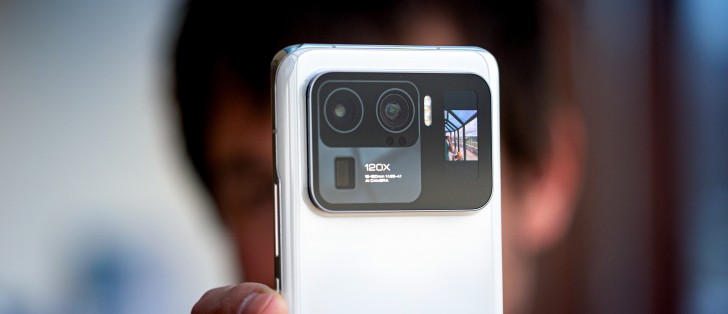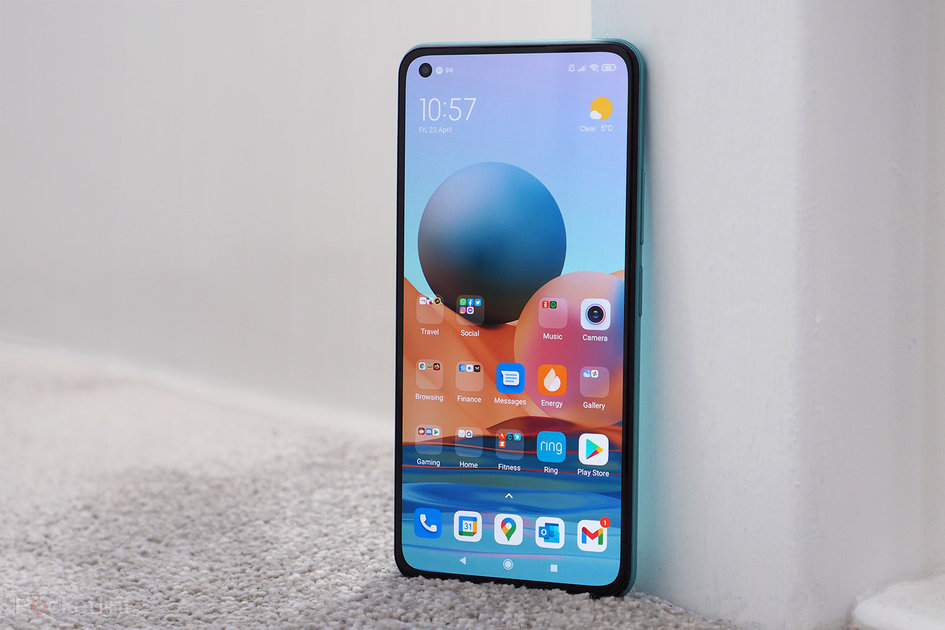(Pocket-lint) – Samsung’s 2020 flagship phones came in the form of the Galaxy S20 Ultra, Galaxy S20+ and the Galaxy S20 – now succeeded by the Galaxy S21, S21+ and S21 Ultra.
The Galaxy S20+ sits in the sweet spot of the three 2020 devices, offering a big display, lovely design and some great specifications but how does it compare to its predecessor?
This is the Samsung Galaxy S20+ against 2019’s Galaxy S10+ to help you work out what the differences are. You can also find out how the Galaxy S21 devices compare to the Galaxy S20 devices in our separate feature.
squirrel_widget_147129
Design
- S20+: 161.9 x 73.7 x 7.8mm, 186g
- S10+: 157.6 x 74.1 x 7.8mm, 175g
It is clear the Samsung Galaxy S20+ and the Galaxy S10+ are part of the same family, both offering premium, solid finishes made up of a combination of metal and glass. The Galaxy S20+ offers a refreshed design compared to the S10 though, opting for a vertical rectangular camera housing in the top left of its rear over the horizontal rectangular housing found in the centre of the S10+’s rear.
On the front, the punch hole cameras positioned in the top right corner of the S10+’s display have been replaced with a centralised singular punch hole camera on the S20+, resulting in a much neater and more symmetrical design. It takes up less screen space so it’s a nicer effect.
The Galaxy S20+ adjusts the aspect ratio slightly too compared to the S10+, meaning a slightly narrower, taller device. Both are IP68 water and dust resistant and both have an under display fingerprint sensor on board, which is very much the same in terms of performance.
The S20+ also loses the “Bixby button” on the side.
Display
- S20+: 6.7-inch, Infinity-O, 120Hz
- S10+: 6.4-inch, Infinity-O, 60Hz
Despite offering only a slight increase in height, the Samsung Galaxy S20+ has a 0.3-inch larger display than its predecessor – which is a result of the slightly adjusted aspect ratio we mentioned and a further reduction in bezels.
Both the S20+ and the S10+ have Quad HD resolutions, which Samsung has been offering on its flagship devices for some time now. The Infinity-O display on both devices offers virtually bezel-free edges and a punch hole camera cut out. Thanks to the repositioning and switch to one camera on the S20+ though, this cut out is much less intrusive compared to the S10+.
The S20+ and S10+ both have Super AMOLED screens, offering plenty of vibrancy and deep blacks and both support HDR10+. The S20+ offers a 120Hz refresh rate at Full HD+ however – though not variable like the S21 – while the S10+ operates at 60Hz. That means the S20+ will give you smoother animations around the device, although you might not actually notice much difference in practice unless you have the devices side-by-side.
Hardware and specs
- S20+: Exynos 990/Snapdragon 865, 12GB RAM, 128/512GB storage, 4500mAh
- S10+: Exynos 9820/Snapdragon 855, 8GB/12GB RAM, 128/512GB/1TB, 4100mAh
The Samsung Galaxy S20+ is a powerful device, offering 2020’s Exynos 990 processor in the UK and Europe, or the Qualcomm Snapdragon 865 processor in the US and elsewhere. Supporting these chipsets is 12GB of RAM as standard, coupled with 128GB or 512GB of storage, both of which offer microSD support for storage expansion.
The Galaxy S10+ also comes with a powerful processor in 2019’s Exynos 9820 or Qualcomm’s Snapdragon 855, depending on the region, but it offers 8GB of RAM as standard. To get the 12GB of RAM and 1TB of storage, you’d have to opt for the ceramic model. The S10+ is also only 4G compatible, while the S20+ is 5G enabled.
Both the Galaxy S20+ and the Galaxy S10+ offer fast charging, wireless charging and reverse wireless charging. The S20+ has a 400mAh larger battery capacity though, which should mean it lasts a little longer than the S10+, although in practise we don’t think there’s much of a difference.
Cameras
- S20+: 12MP ultra wide, 12MP main, 64MP telephoto, DepthVision; 10MP front
- S10+: 16MP ultra wide, 12MP main, 12MP telephoto, 3D Depth; 10MP + 3D Depth front
The Samsung Galaxy S20+ changed things up quite a bit in the camera department compared to its predecessor. Both offer quad rear cameras, but the S20+ has a new 12-megapixel main camera that features larger pixels and a fixed aperture, while the S10+ had Dual Aperture.
The S20+’s ultra wide camera also gets a 12-megapixel sensor, but with smaller pixels and a narrower aperture, while on the telephoto lens, Samsung goes for resolution in the S20+, with a 64-megapixel sensor compared to the S10+’s 12-megapixel offering. The zoom is a little more complicated on the S20+ than the S10+, with what Samsung calls “Hybrid Optic Zoom” out to 3x optical and Super Resolution Zoom taking you out to 30x. This latter option is basically zoom with AI to try and clean things up.
On the front things change too. The S10+ offers a dual front camera, while the S20+ only has one single camera.
There are several new features with the S20 device though, including Single Take that allows you to capture from all cameras at once, as well as 8K video capture capabilities – which the S20+ uses that 64-megapixel sensor for. The S10+ meanwhile, also has a number of great features, but only 4K video capture.
Price
- S20+: From £999 (5G)
- S10+: From £899 (4G)
The Samsung Galaxy S20+ started at £100 more than the S10+ when it first arrived as it was only available as a 5G handset in the UK.
The Samsung Galaxy S10+ started at £899 when it arrived in March 2019.
Both models should be available cheaper now though given they have been succeeded by the Galaxy S21 series.
squirrel_widget_184580
Conclusion
The Samsung Galaxy S20+ not only offers a nicer design than the Galaxy S10+, but it offers numerous improvements, including a larger and faster display, more camera capabilities and better hardware, such as more RAM as standard and a larger battery capacity.
The Galaxy S10+ is still a great phone however, and is quite a bit cheaper following the availability of the S20+ and S21+, which might make it a better choice for those on a budget. For those wondering whether to upgrade, the S20+ has some great potential, but it’s still pretty close in experience to the Galaxy S10+ so you might want to consider the S21+ instead.
Writing by Britta O’Boyle.
